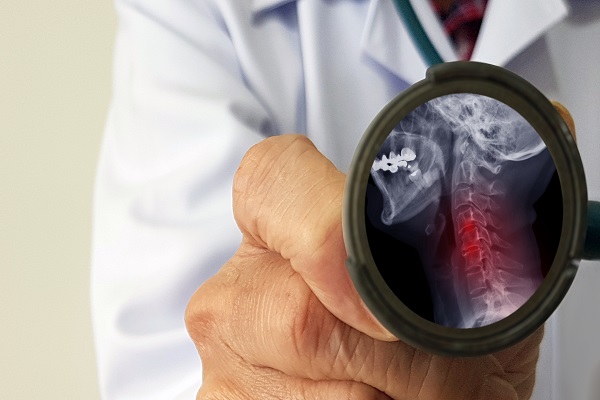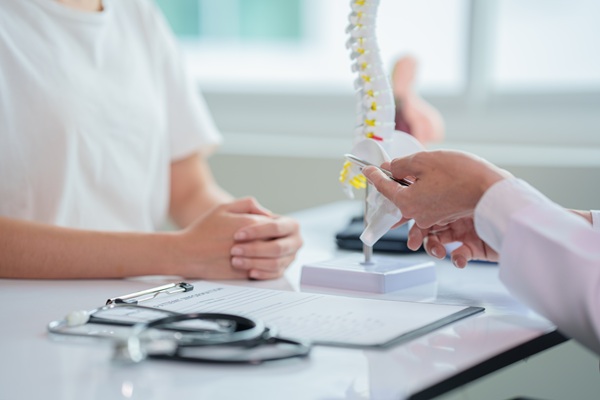Traditional Stenosis Treatment Options

Stenosis treatment may be necessary if you are experiencing the pain and stiffness associated with this condition. The wear and tear that comes with aging and osteoarthritis is often the cause of spinal stenosis, which is the narrowing of the spaces within the spinal cord (the spinal canal). This narrowing puts immense and debilitating pressure on the neck and lower back.
Patients who suffer from spinal stenosis should begin with conservative treatment options before they explore more invasive procedures.
Conservative treatment options
Over-the-counter medications like acetaminophen and ibuprofen can help relieve pain and reduce inflammation. Prescribed medications can be given to treat more severe cases of spinal stenosis that OTC medications do not seem to help.
Hot and cold applications that are alternated may provide some relief, relax tense muscles around the spine and reduce inflammation.
Steroid injections via epidural provide longer-lasting and more direct pain relief benefits, which may help patients perform activities of daily living and physical therapy.
Exercise and activity modifications may be necessary to avoid motions that aggravate the condition. Resting may also provide some relief and let the muscles around the spine relax so less pressure is placed on the nerves.
Physical therapy can help strengthen the muscles around the back and neck to improve posture. Postural improvements provide physical relief from positions that aggravate the condition, and exercise may improve flexibility to reduce stiffness.
Weight loss and diet modifications may prove to reduce symptoms by relieving some of the pressure from weight gain that the spine is experiencing. These changes may also slow the degeneration of the spine.
If conservative treatment options are not easing the discomfort associated with the most severe cases of spinal stenosis, there are a few other stenosis treatment options available.
Other treatment options
Surgery is a potential option if the patient is suffering without relief and the pain is hindering work and activities of daily living. Decompression laminectomy is one surgery option that may provide the best results. This procedure removes the back part of the vertebra and any bone spurs and calcium deposits within the spinal canal to produce more space and relieve pinched nerves.
A laminoplasty may be performed if the stenosis is affecting the cervical spine. With this procedure, space is created within the spinal canal and a hinge is put in place to bridge the gap that remains, leading to better range of motion and reduced stiffness and pain.
Spinal fusion is another surgery option that may be performed. During a spinal fusion, two or more vertebrae are fused together (connected) to build a better support system for the spine and body. While this procedure may limit some movement patterns, it is ultimately a good option to reduce pain and inflammation and provide stability to the body.
Learn about minimally invasive solutions
If at-home care has not helped and surgery is not of interest, there are other ways we can help. New minimally invasive procedures are available to treat pain and to promote healing. Patients visit our office for treatments they cannot get elsewhere.
If you have spinal stenosis, whether in your neck or lower back, we can help. An examination and health history will provide us with the information we need to develop a stenosis treatment plan that will reduce symptoms and help you feel like yourself again.
For more information or to schedule an appointment with us, call (602) 603-8951. Our office is located in Phoenix. Call Randall Porter, M.D. today.
Check out what others are saying about our services on Yelp: Read our Yelp reviews.
Recent Posts
Hemifacial spasm is a neurological condition that causes involuntary twitching or contractions on one side of the face. These spasms may begin near the eye and gradually affect surrounding muscles, including the cheek and mouth. While the condition is not typically life-threatening, it can significantly impact daily life and emotional well-being. Hemifacial spasm treatment focuses…
A herniated lumbar disc occurs when the soft center of a spinal disc pushes through a tear in the outer ring, often irritating nearby nerves. Early attention helps reduce pain and protect nerve function. Patients may experience sharp low back pain, radiating leg pain (sciatica), numbness, or weakness. A neurosurgeon evaluates symptoms, reviews imaging studies,…
Meningioma is a type of tumor that develops from the membranes covering the brain and spinal cord. While many meningiomas grow slowly and may not cause noticeable symptoms, some tumors can lead to significant health concerns. When you can recognize the signs early, you can get the treatment you need from a neurosurgeon, giving you…
Radiosurgery or stereotactic radiosurgery is a technique used to deliver high doses of radiation to targets within the brain. Radiosurgery, despite its name, is not a surgical procedure. Instead, the name comes from its precision. Radiosurgery can treat benign brain tumors, small brain metastases, arteriovenous malformations, and trigeminal neuralgia.Unlike surgical interventions, radiosurgery is non-invasive. Side…


